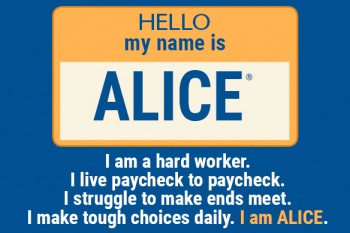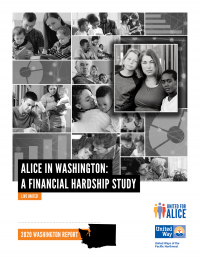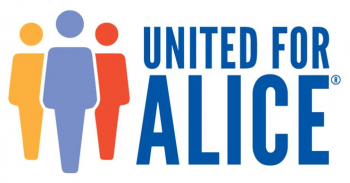
Who is ALICE?
ALICE, a United Way acronym which stands for Asset Limited, Income Constrained, Employed, represents the growing number of individuals and families who are working, but are unable to afford the basic necessities of housing, food, child care, health care, and transportation.
For decades, society has generalized the people who fall between “poverty” and “wealth” as middle class with no specific understanding of their situation or struggles.
Until now.
Through a series of standardized measurements, United Way, with its research partner Rutgers University, is quantifying the size of the workforce in each state that is struggling financially, and the reasons why. These measurements provide a broader picture of financial insecurity than traditional federal poverty guidelines.
In Lewis County, 11% of residents live below the poverty threshold, but an additional 24% live just above the poverty threshold and are unable to consistently afford the basic necessities.
This is the ALICE population.
ALICE households include women and men, young and old, urban and rural, and of all races and ethnicities. ALICE is the cashiers, custodians, day care providers, and warehouse workers we see every day - workers who keep our local economy, and our families' lives running, but who aren't always sure they can put food on their own tables. ALICE's struggles affect not just ALICE individuals and households, but our whole community.

CLICK HERE for the ALICE in Lewis County information sheet. (2022 report)
CLICK HERE to download the full ALICE report for Washington State. (2022 report)
Why ALICE Matters
The United Way ALICE Project raises awareness about a huge but hidden segment of our community that is struggling to afford basic necessities. The success of a community is directly related to the financial stability of its members.
Rent or electric bill? Food or prescription drug? For too many hardworking households, impossible decisions such as these are a way of life. When ALICE is forced to make difficult choices, the entire community faces consequences. The ALICE Project provides a framework and language for stakeholders to reassess public and corporate policies and implement changes that improve the lives of ALICE and their communities.
While ALICE isn’t in poverty, they aren’t thriving either. Often ALICE is one small crisis or unexpected setback away from sliding into poverty. The difference between making it or not, each month, can come down to simple things such as a car repair, a doctor’s visit, or other unexpected expense. Despite the combination of ALICE’s wages and some public assistance, ALICE households still face an average 25 percent income gap in order to reach financial stability.
ALICE workers are essential to the fabric of our society. ALICE works in jobs that are integral to our communities, from child care educators and home health aides to mechanics – all workers we rely on every day. The future success of our communities is directly tied to the financial stability of ALICE households.


